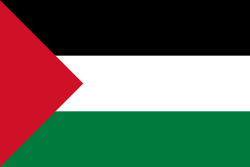热门问题
时间线
聊天
视角
阿拉伯复兴社会党 (叙利亚主导派)
来自维基百科,自由的百科全书
Remove ads
阿拉伯复兴社会党(阿拉伯语:حزب البعث العربي الاشتراكي,罗马化:Ḥizb al-Ba‘th al-‘Arabī al-Ishtirākī),简称复兴党,又被称为亲叙利亚复兴运动,是一个在阿拉伯世界有众多党部的新复兴主义政党。该党在1966年2月继承阿拉伯复兴社会党后出现,由叙利亚政府主导。2024年以前,阿拉伯复兴社会党—叙利亚地区是该党最大的分支。
在1970至2000年间,该党由时任总书记兼叙利亚总统哈菲兹·阿萨德领导;2018年10月以前,该党的领导权由阿塞德之子巴夏尔·阿塞德(叙利亚地区党部领导人)与阿卜杜拉·阿赫马尔(泛阿拉伯民族组织领导人)共享。2017年,叙利亚地区领导机构与民族领导机构合并,巴夏尔·阿塞德成为中央领导机构总书记。
Remove ads
领导制度
哈菲兹·阿萨德于1970年成为叙利亚地区领导机构书记,之后成为民族领导机构总书记[3][4]。即使他在2000年过世后,其仍是民族领导机构的正式总书记;而叙利亚地区领导机构书记则由其子巴夏尔·阿萨德接替。
阿卜杜拉·阿赫马尔在1971至2018年间任民族领导机构副总书记[5]。巴夏尔·阿塞德于2017年当选民族委员会总书记。希拉尔·希拉尔在2018年至2024年间任中央领导机构副总书记。2024年起,易卜拉欣·哈迪德任中央领导机构副总书记。
在该党第十四次民族代表大会时,该党原有的领导机构“民族领导机构”被“民族委员会”取代,民族委员会将由复兴党各地区领导机构书记组成。
第一次到第八次民族代表大会为分裂之前的阿拉伯复兴社会党举办。
- 第九次民族代表大会(1966年9月25日—29日)
- 第九次非常民族代表大会(1967年9月)
- 第十次民族代表大会(1968年10月)
- 第十次非常民族代表大会(1967年10月—11月)
- 第十一次民族代表大会(1971年8月)
- 第十二次民族代表大会(1975年7月)
- 第十三次民族代表大会(1980年7月27日—8月2日)
- 第十四次民族代表大会(2017年5月15日—5月21日)
分支

该党在伊拉克又被称作“左翼复兴党”或“伊拉克地区”(Qutr Al-Iraq)[6][7]。较著名的党员有马哈茂德·谢赫·拉迪、法齐·穆特拉克·拉维与马哈茂德·沙姆萨[8]。该党反对海珊的统治[9],也是第一个被海珊针对的团体。在海珊政权的镇压下,复兴党伊拉克党部失去了数百名干部[10]。拉迪在1970年代常驻于叙利亚[11]。
该党称海珊政权为“法西斯”。当两伊战争在1970年爆发时,该党与伊拉克共产党、库德斯坦爱国联盟和库德社会党参与了伊拉克爱国与民主阵线的建立,该阵线宣示要推翻海珊[注 1]。
在1980年代,该党与开始与伊拉克伊斯兰最高委员会合作[10]。1989年,该党在大马士革举行了第一场伊拉克反对派大会。该党也参与了1991年在贝鲁特举办的伊拉克反对派会议[7] 。1999年,拉迪停留在英国[12]。该党是伊拉克国民武装力量联盟的三个构成团体之一(另外两个是伊拉克共产党与伊斯兰达瓦党)。该联盟同时反对海珊政权与美国干涉[13]。在2003年入侵伊拉克前夕,该党公开谴责美国参与对流亡伊拉克异议人士的组织[14]。
在海珊政权垮台后,对于该党是否也适用去复兴党化法令存在疑问[15]。2008年,拉迪请求准许该党在伊拉克运作并被允许参与和解过程[6]。作为回应,伊拉克政府表示“复兴党伊拉克党部”与“海珊的复兴党”为不同的团体,因为在海珊政权时期该党曾参与反对派会议[15]。直到2009年时,该党伊拉克党部仍位于叙利亚境内[16]。
Remove ads
注释
参考文献
Wikiwand - on
Seamless Wikipedia browsing. On steroids.
Remove ads



